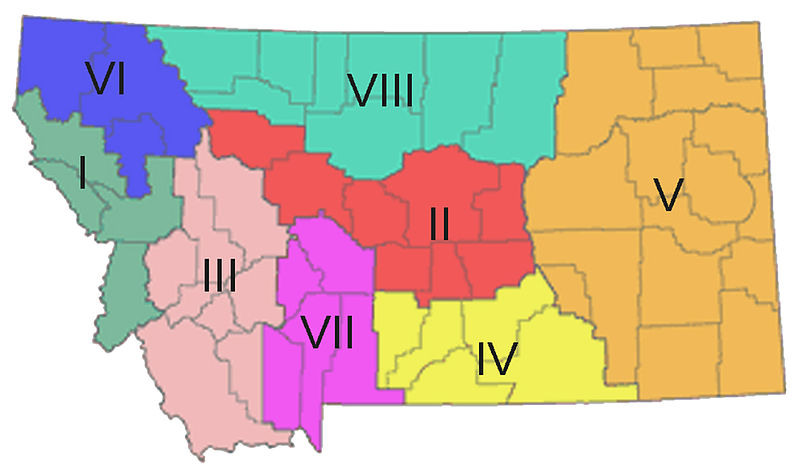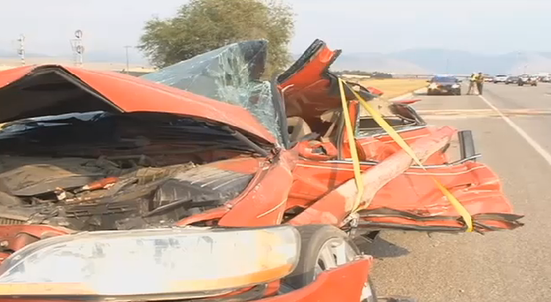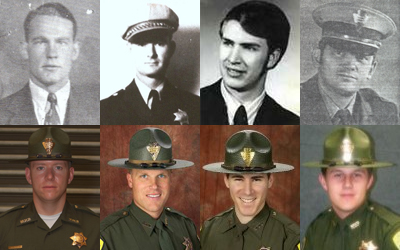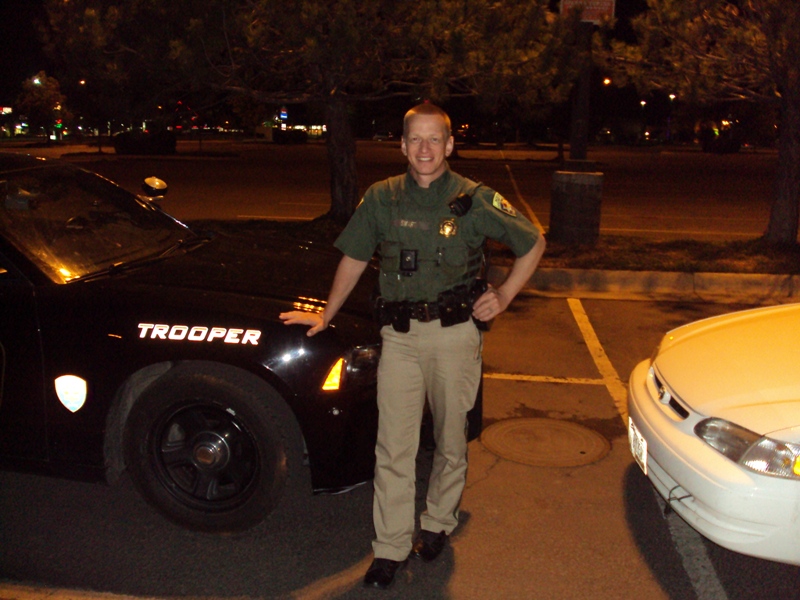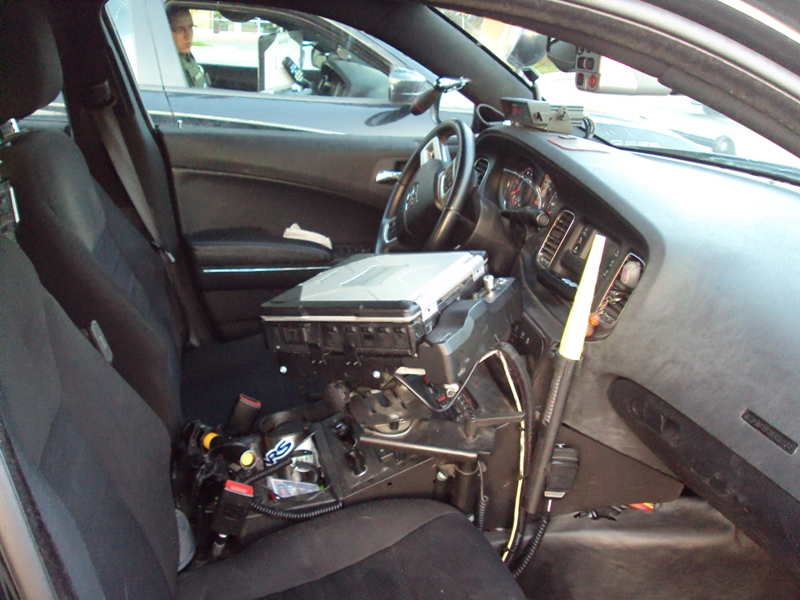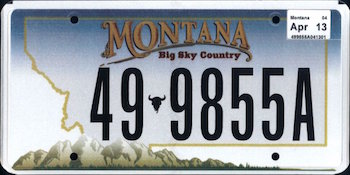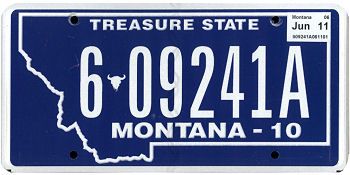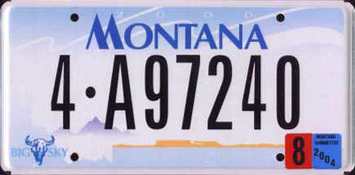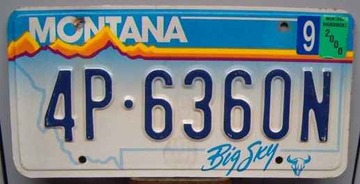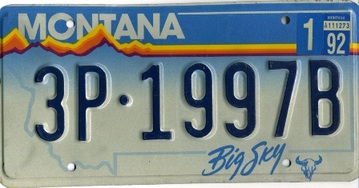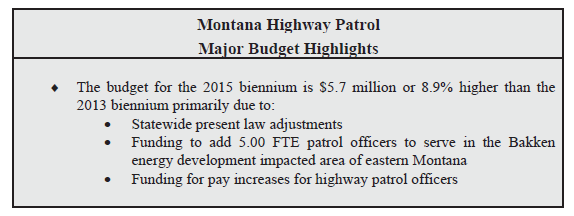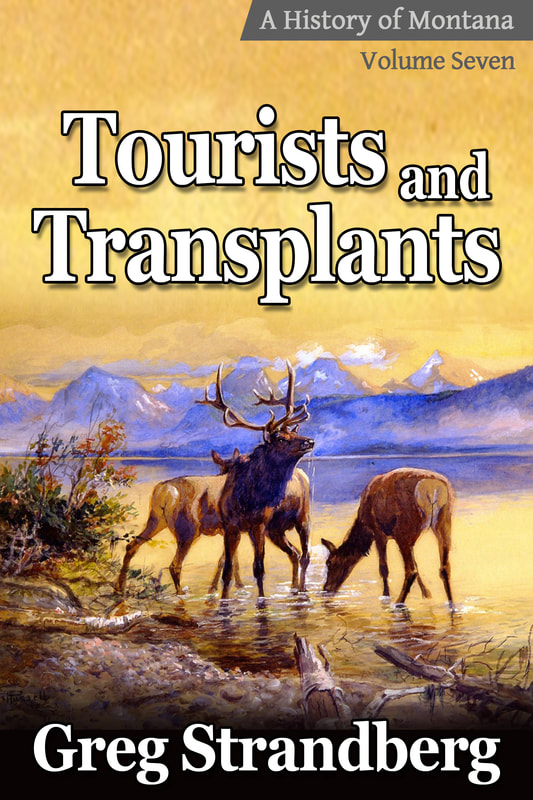Mr. Strandberg,
In the hopes that first-hand experience may increase your appreciation of the Montana Highway Patrol I am contacting you about the opportunity for a ride-along.
If you are interested, I will clear out my passenger seat and you can ride with me as I patrol the highways on an upcoming nightshift. You are welcome to join me for a couple hours, a whole 10-hour shift, or just come join us at break.
We want to be available to answer any questions you may have about the Patrol as you look to shape the laws that bind us.
Please call or e-mail at your convenience,
- Phil
I put this in my politics email folder, fully intending to forget about it. I feel most legislative candidates will do this.
A week went by, however, and I started to think about this.
Maybe by going out and riding along for a bit I can learn some things, maybe write about them so others can learn them too.
More, maybe I can help people understand some of the problems the Montana Highway Patrol faces, and perhaps that will make their job easier, people’s lives safer.
So at the beginning of May I sent Phil an email telling him I’d be interested in riding along for a few hours. We chose Saturday as that’s often an interesting, and even entertaining, night.
We’ll discuss that night in detail, but first I’d like to give you a brief history of the Montana Highway Patrol.
A Short History of the Montana Highway Patrol
The Montana Highway Patrol was created in 1935 after the disastrous 1933-34 driving season saw a 74% increase in Montana highway fatalities.
A total of 24 officers were tasked with enforcing the state’s 11 traffic laws. Their presence helped drop highway fatalities by 25%.
By 1972 Montana’s traffic deaths reached the all-time high rate of 395. In response, the legislature increased the number of Highway Patrol officers to 220. The first women would join the Patrol’s ranks in 1978.
In 1987 the seat belt law was enacted in Montana, something that’s done much to save lives. In fact, we know that in 1981 just 11% of people used seatbelts but by 2010 that’d risen to 85%.
Despite this, half of the 33,000 U.S. car deaths each year happen because the person was not properly restrained with a seat belt.
In 1996 the Montana Highway Patrol’s record keeping system was computerized.
Beginning in 2001 the Montana Highway Patrol began offering protection to visiting dignitaries.
In 2003 the Legislature began studying problems with recruitment and retention in the Montana Highway Patrol.
The study was completed by 2005 and House Bill 35 came out of it. This “allowed the department to make Patrol pay competitive with the salaries offered by local law enforcement agencies” while also exempting the Highway Patrol “from vacancy savings provisions, allowing additional officers to be placed on the road.”
In 2008 the five-year project of putting wireless mobile data terminals in each Patrol car was finished. That fall the SmartCOP system was also finished, something that put Itronix laptops, also called “Go Books,” into each car.
Those Go Books allowed the access of real-time criminal record information, meaning the latest in warrants and restraining orders would be on the officer’s computer when a record was pulled up.
The Montana Highway Patrol Today
The Highway Patrol operates with a mission that can be summarized as the 3 E’s:
- Enforcement;
- Education;
- Engineering.
Highway Patrol Troopers like Phil Smart will work nights one quarter of the year. So for three months they have to alter their schedule to work nights.
On top of this, troopers will have to go into court during the day while they’re doing these three months of night work.
All of this comes down to staffing issues within the Montana Highway Patrol.
District 1 has just 3 people on night shift at any given time. From 3 to 7 AM there’s no one on shift.
Why is that?
After all, didn’t we institute new rules with HB 35 to ensure the Montana Highway Patrol can recruit and retain the people it needs?
Yes, but sadly the system is once again not working.
Consider that it takes about a year to train a Highway Patrol recruit, and costs perhaps $25,000 if you figure the money spent on educating them and the pay they’re given when you do that.
Now consider that these newly minted Highway Patrol officers – who just came out of the academy in Helena – have to go live in places like Sidney or Glendive or Browning.
What if they don’t want to live there? What if they start looking for work closer to Helena or Missoula or some other large urban area that has things to do?
On top of this we have local law enforcement and sheriff’s offices that are not hiding the fact that they want to recruit those officers, and if they’ve already got a year of paid training…even better!
So that’s an issue right now with the Montana Highway Patrol – people are being trained and then they’re being poached by other agencies.
This is why District 1 has no on one the roads from 3 to 7 AM.
The Problem Intersection of Flynn & 10 West
Phil wanted me to point out an area that’s causing a lot of problems.
It’s the intersection of Flynn & Highway 10 West. We just had a serious crash there in August.
People that intend to turn left have to go across 2 lanes of traffic that’s going 55 mph.
People often misjudge the speed and things like this crash happen.
Phil told me that a big part of his job is recognizing these places and then offering advice on how those places can be re-engineered so we don’t have crashes like this.
Phil told me for this location, they’ll need to figure out where to put a light in. That takes design work and time as well. So despite knowing we have a problem spot here, it won’t be fixed for another year or more.
That’s frustrating, but it’s how we do things.
The Dangers the Montana Highway Patrol Faces
A total of 8 Montana Highway Patrol Officers have died in the line of duty since the agency started in 1935.
Three were killed by gunfire, two by car accidents, two by vehicular assault, and one after being struck by a vehicle.
- The first Highway Patrolman was killed in 1946, a man named Bob Steele. He was shot and killed while investigating a Billings robbery. His partner managed to shoot and kill the man that did it.
- James Anderson came next, in 1954, killed in Livingston when a vehicle swiped him while he was talking with a driver.
- Richard Hedstrom was on his 18th day with the Highway Patrol in 1973, giving a warning to a driver in Kalispell for a faulty headlight when a drunk driver plowed into him from behind at 87 mph. The drunk driver died from the injuries as well.
- In 1978 Michael Ren was killed while chasing down a recently-released mental patient. The man had crashed his car but when Ren approached the man shot and killed him. Ren’s son would later serve with the Montana Highway Patrol.
- Nearly 30 years went by before David Graham was killed in 2007. A truck crossed over the line and hit him head-on.
- That Kalispell region would prove deadly over the next decade, with Evan Schneider dying in 2008 after pursuing a vehicle and being struck by a truck head one during the chase.
- Michael Haynes died in 2009 when a drunk driver drove down US 93 the wrong way and struck his car head-on.
- David DeLaittre was killed near the Three Forks Airport in 2010 after exchanging gunfire with a man that’d been walking along with a shotgun.
Nearly every single one of those officers had a young wife and son at home at the time of their death, parents still living as well.
Riding Along with Trooper Phil Smart
I felt this way because I saw it as a great opportunity to help inform people of what the Highway Patrol does, as well as some of the problems they face.
I got a great trooper in Phil Smart, as he’s also a teacher at the academy. He does a great job in explaining things in easy-to-understand ways.
I drove over to the Montana Highway Patrol’s Division 1 offices on Palmer Street here in Missoula. I got there around 7:30, called Phil, and he told me that he and two other troopers were having dinner.
So I went and chatted with them while they ate and then we went out on patrol.
I went out with Phil Smart and he told me a lot, more than I can remember, in fact.
Lots of things stood out to me and here are a few things I want you to know.
- If you’re pulled over for a DUI, your vehicle will be towed. The vehicles you see on the side of the road are not there because the guy got pulled over – they’re there for something else.
- Semi-trucks in Montana typically don’t speed, with most going in the 65 to 70 mph range. Phil told me that one trucking company in Missoula found out that the best speed for fuel economy was 62 mph, and they encouraged their drivers to go at that speed.
- If you’re driving with marijuana and the trooper smells it, it’s better to be honest. Lying to them that you don’t have it or that it’s oregano or something…that doesn’t work. Actually, it might make things worse for you as the trooper is now more suspicious of you than before.
- Troopers can tell right away if you’re wearing a seatbelt or not. If they see that, they might pull you over even if you weren’t going that far over the speed limit. Mainly, buckling up is a very simple thing you can do to ensure you’re not giving troopers a reason to pull you over.
Let’s get into a few more things in detail.
The MNI System that the troopers use can cause difficulties, especially the way you can’t tell county numbers apart. For instance, here’s a listing:
- 2062849
- 2689424
That first one will be Cascade County, the second Pondera. Personally, I think having a dash after the county number would be helpful. I think the troopers think so too.
I was very surprised to learn that for any 911 call that involves a vehicle, the Montana Highway Patrol have to be called. In fact, if it’s a vehicle then the sheriff’s office isn’t even contacted, nor are local police (unless it’s in town).
That’s why we drove out by Target Range west of Missoula to look at a trailer court that’d had a complaint about some kid driving erratically and making noise.
We drove all the way out there, but of course by that time (about 15 to 20 minutes later) there was no one around. Despite this, Phil told me that just showing their presence after a call is often enough to stop that type of horsing around.
So we drove into the entrance and then drove away. People with open trailer doors saw us. We did the same thing over by Huson when we pulled by the bar there. Oftentimes it’s just about letting people know that Highway Patrol are indeed out there.
Something else I was very interested to see is that Phil has to fill out lots of electronic forms on his computer. Many of these are about citizen contacts when a stop occurs.
What I was really surprised by were the forms that had to be filled out when dealing with minorities, such as Hispanics. There have been some lawsuits in the past so Highway Patrol officers are required to fill out incident reports when they meet a minority like that. The reason is to establish a baseline of what a typical Hispanic encounter is like.
To me it seems like a big waste of time doing that, but you have to realize, the Highway Patrol gets lots of legal challenges from lawyers, especially those with DUI or drug offense clients.
Phil has been put on the stand many times and he often gets grilled and torn apart by the lawyers. For the most part, they’re looking for anything that will allow their client to get off. So it becomes frustrating for Highway Patrol members, when they pull over a drunk, to see the drunk pay $10,000 for a lawyer that gets them off on some technicality or some such.
It happens a lot, and it’s why the Highway Patrol has to do lots of paperwork, lots of reports. In fact, many times when you see a Highway Patrolman pulled out into an interstate turnoff, they might not be checking radar so much as doing some paperwork.
Speaking of radar, it’s not on all the time. In fact, Highway Patrol members have to turn on the radar when a car passes. Also, the radar has to be pointing at you as you’re coming. It won’t work if you just zip by at a 90 degree angle – the radar has to calculate your speed minus the officer’s speed and then determine the difference.
We did that a few times, and pulled over two speeders. One was out by Blue Mountain, an older man with Great Falls plates that’d been pulled over numerous times before. He got a ticket for going about 13 miles over the limit, and the main reason for that is he also had a cracked windshield and he didn’t have his insurance card on him.
Phil told me that many, many times they just give warnings. If there are lots of little things – like the windshield crack and the no insurance – they might all add up and tell the officer, hey, this guy needs to get a bit more than a warning, he needs a ticket.
We had a similar case on the interstate when he pulled over a few young mae going about several miles over the limit. He had one headlight out and the high beams on as well so we pulled him over. We found out that he’d had that light out since January, and had gotten a warning on it.
I was surprised that Phil gave him a warning as well. Another speeder that was going 13 miles over, and who had Idaho plates, was not so lucky – he got a $40 speeding ticket.
How Montana Highway Patrol Tickets Work
Also, don’t think that the Highway Patrol has some kind of quota on the tickets they write – they don’t.
For the most part, ticketing is something they don’t really want to do, it’s something they have to do if the situation warrants it.
They don’t go out looking for people to write-up, but people often make it easy for them. Seatbelts are a big reason – it’s so easy for the Highway Patrol to spot if you’re not wearing one.
So that’d be a ticket…if they decide to pull you over for it. They may not.
Now, let’s say you get a $20 no-seat-belt ticket.
- $10 of that will go to the prosecuting county.
- $10 of that will go to the state’s general fund.
The Highway Patrol does get some money from the state gas tax, but just 11%.
The State and Federal Gas Tax
Money for the Interstate Highway System would come from the Highway Trust Fund. Most of the Highway Trust Fund’s money comes from the federal fuel tax.
Fuel has been taxed in America since 1919, when Oregon became the first state to do so, at $0.05 a gallon. By the end of the 1920s, all the states of the country were taxing fuel, and in 1939 the average across the nation was $0.04 a gallon.
Montana got its gas tax in 1921, and the nation had one in 1936. Today Montana’s gas tax is $0.27 a gallon while the national gas tax is $0.18 a gallon.
Nationally, America’s first federal gasoline tax came in 1932 with the Revenue Act of 1932. That put a national tax of $0.01 on a gallon of gas, in addition to whatever states were taxing.
By the time the Federal-Aid Highway Act of 1956 was passed, the federal gas tax was $0.03 per gallon. The average cost of a gallon of gas at that time was $0.29 and we know that in 1960, 74.4 million vehicles were on American roads.
Even if every one of those vehicles was only buying one gallon of gas a week, that would be $116 million in tax revenue for the Highway Trust Fund each year. American drivers would need to buy $1.1 billion in fuel to create that much tax revenue.
That fuel was coming from Big Oil, which was relying on the federal government to protect their overseas investments with taxpayer money, and as the decades wore on, the lives of young American soldiers.
Big Oil had long ago driven out the American producers, ensuring that the country would not be self-sufficient when it came to oil. What was good for America was bad for their bottom line.
Issues with Driver Tags
The current driver’s tags cannot be read. What we’re talking about are the tags you buy each year, the ones that used to have a large two-digit number on colored paper.
Now we use smaller numbering on white paper. Let me ask you…are they easier or more difficult to see?
The story is that the DMV bought 1,000 miles of tape for our current 2010's-style tags and it’ll take forever to use that all up.
Meanwhile, our Highway Patrol troopers have to crane their necks and narrow their eyes – all while trying to drive their own vehicles – to try and ascertain what the number on that tag is.
I tried this while driving and it’s very difficult. Honestly, you just don’t think about checking out someone’s tags when you’re driving.
But if you’re trying to look at that tag to see if the number is expired or not you will be. Alas, it’s near-impossible to read those number unless you’re right upon that vehicle (I couldn’t see it until we were virtually passing it. Also, the 5 and 6 in 2015 and 2016 look nearly-identical).
This is an issue that should be addressed. Please, let’s just go back to the old way of numbering.
And when I say old, it should be clear from those plates that we need the numbering system from the 1990s.
Let’s see a smart legislator introduce a bill in the 2017 session to do this. It might not pass, but at least we’re taking the first steps to fixing the problem.
A big part of that is awareness of the problem.
The Montana Highway Patrol Budget
In 2013 the Montana Highway Patrol asked for $2.03 million more for their budget, and the main reasons for that were because of the following over-budget expenditures:
- Minor radio supplies and equipment: $538,000
- Single user computers: $740,000
- Supplies for law enforcement personnel: $259,000
- Supplies for law enforcement vehicles: $429,000
- Vehicle purchases: $412,000
Those items actually come out to $2.3 million. I think it’s because of needed items like that that we saw the 2015 Montana Highway Patrol budget increase by $5.7 million.
Here’s where the Montana Highway Patrol gets their funding:
Montana’s $5 vehicle and registration fees provide the money needed for the recruitment and retention fund that helps support the cost of highway patrol uniforms, equipment and even pay raises.
These $5 vehicle fees are something else that’s come out of HB 35.
Unfortunately, there’s a huge budget shortfall with the way the current system is set up.
Consider if you have an older vehicle, one that can get permanent registration.
That means you don’t need to pay $5 each year. It also means the Montana Highway Patrol is not getting the money they thought they were.
Let's do some more talking with agency heads so we can figure out how to fix this problem.
Problems with the Jails
Here in Missoula our jail is often full. Jails in Lake County are full. Sometimes troopers have to ferry prisoners back and forth, only to be told that there is no room for them.
I was astounded to learn that we’re letting some people go with little more than a ticket, and for a crime we’d usually put them in jail for.
Sometimes we’re letting drunks go when they should be put in jail. Yes – we have to drive them home because there is no room!
Worse, sometimes troopers have to go past their shift time to drive people around. Sometimes people are dropped off in random place, simply because there is no where else for that trooper to take them and they’re already up to an hour of overtime.
So this is an issue.
- I personally blame legislators for creating so many laws that put so many people in jail, often for silly things.
- Property taxpayers have to take some blame as they continually refuse to fund bonds that will build new jails.
- Local officials deserve blame. We were told in ’96 when the Missoula jail went in that it’d be a money-maker, housing inmates from neighboring counties.
Sadly, the Missoula jail is overflowing and we’re sending our inmates to other counties…and paying more to do so.
A big problem, to many people’s way of thinking, is the Povorello Center and the fact that many people from around the country realize they can come to Missoula and get a free ride.
Phil told me of a transient man that stole a car around Billings so he could drive up to Missoula just to go to the Pov.
Our jails are a very serious issue right now and they’re making it difficult for our Montana Highway Patrol troopers to do their job.
Let’s start talking about this more, but far from only doing studies, let’s find some concrete ways to reduce jail populations so more serious offenders can be housed there.
And please – we have to talk about how we can do something with the private, 464-bed Hardin prison that just closed. Why can’t that be used for the counties’ excess jail population?
And don't forget - mental health clinics work a lot better long-term than jails.
Let’s start talking about this.
Conclusion
Nonetheless, there’s a lot of stuff that I’m missing.
Alcohol is of course a huge problem for the Highway Patrol. High speeds are another.
- Getting somewhere a few minutes faster so you can sit down and watch TV isn’t worth risking a high-speed accident for.
- Having that last drink with friends or round at the bar isn’t worth killing yourself or someone else.
Just think more.
I think the Highway Patrol would be grateful if we as Montanans just think a bit more about what we do when we’re driving.
We don’t need to use the phone, play around with the radio a lot, or allow passenger so get unbuckled.
All of those things can lead to accidents.
Looking at another facet of it, the Highway Patrol needs adequate funding to do its job, and keep qualified people.
Currently there’s a huge ‘brain-drain’ because new troopers are being picked off by other agencies.
Clearly these agencies are also having staffing issues, and I think the whole state is having troubles keeping pay in pace with other states in the region.
If we want efficiency and costs to remain under control, we need to adequately fund the Montana Highway Patrol based on what they’re telling us.
I was told a lot last night and saw a lot too. I hope by writing it down you can have better appreciation for what the Montana Highway Patrol does, and needs.
Thanks for reading.
You Might Also Like
Looking at Vehicle Taxes in Montana for 2015-2017 (Jan 2015)
How Much Do Prisoners Cost Montana? (March 2014)
Missoula County’s Jail Problems: What Can Be Done? (Sept 2015)
The New Highway Bill for Montana (Dec 2015)

